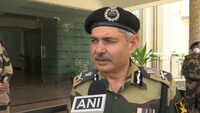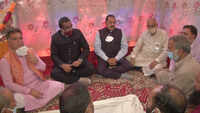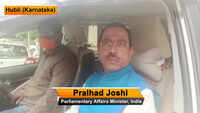
Rights activists, Rule of Law-minded persons and conscientious advocates have started petitioning the Supreme Court seeking an impartial probe into the crude encounter killing of gangster Vikas Dubey. Rightly so. They brought alive the issue of the unholy criminal-police-politician nexus, which is as old as the history itself. They rightly argued about cardinality of ‘rule of law’ in a civilised society.
The noxious effect of the nexus, the SC had said in its 2018 judgment in ‘Public Interest Foundation’ case, “was seemingly felt in its strongest form during the 1993 Mumbai bomb blasts which was the result of a collaboration of a diffused network of criminal gangs, police and customs officials and their political patrons.” The Centre appointed the Vohra Committee to study the spurious relationship between criminals, babus, lawmakers and cops and suggest remedial steps.
In October 1993, the Vohra Committee submitted its report and said, ”The nexus between the criminal gangs, police, bureaucracy and politicians has come out clearly in various parts of the country. The existing criminal justice system, which was essentially designed to deal with the individual offences /crimes, is unable to deal with the activities of the Mafia; the provisions of law in regard economic offences are weak”.
The rope that strings goons, babus, netas and police together genetically recoils into a noose and remorselessly kill innocent citizens, including policemen, who stand against this nexus in the illusion that Rights and Rule of Law would shield them against violent reprisals. We have not seen rights activists or rule of law-minded persons or even conscientious advocates rushing to the SC for remedial measures when this unholy alliance brutally killed more than 100 persons. Only the families of the deceased keep shedding tears in silence.
Remember forest brigand Veerappan, who for two decades had unleashed a reign of terror in the forests contiguous to both Karnataka and Tamil Nadu? Police records unnervingly reveal that Veerappan and his gang killed nearly 2000 male elephants and stole 40,000 kg of tusks and indulged in rampant smuggling of red sandalwood denuding the forests. It also tells that in two decades, the gang killed 124 persons, including many policemen, and abducted 45 more, including Kannada cine star Dr Rajkumar from his Gajanoor farm house in July 2000.
Veerappan’s gory credentials were much worse than Dubey’s. In August 1992, Verappan killed Mysore SP Harikrishna and his team of six policemen. A year later, he killed 22 policemen and seriously injured SP Gopalakrishna through a blast at Palar.
After kidnapping the cine star, Veerappan set out a long list of demands, including settling of Cauvery water disputes, to camouflage his only ransom term - close TADA cases against his associates and release them from jails.
Bowing to the brigand, the two state governments began the legal process to release his associates. No human rights organisation, rights activist or advocate felt the need to move SC against this unholy nexus trampling the dignity of those who died fighting the scourge called Veerappan. It was Abdul Karim, a grieving old father of a sub-inspector slain by Veerappan, who courageously moved SC to stop this smothering of the rule of law. SC agreed with Karim and prevented release of brigand’s associates.
Veerappan was killed in a police encounter on October 18, 2004. Like Dubey’s, that encounter raised several questions. His wife Muthulakshmi said her husband was sedated by her relatives and then killed in cold blood by police! Her tears moved the human rights organisations, which had not reacted to tears shed silently by the kin of the 124 killed in cold blood by the brigand. And who cares for 2,000 elephants or the sandalwood forests?
As many as eight human rights organisations came together to form a fact finding team, which visited the Veerappan encounter site. On January 18, 2005 the fact finding team released its report to the media echoing Muthulakshmi’s version - Veerappan and his three associates were given sedative through buttermilk and that they were unconscious when captured by policemen. Madras HC tossed out this theory in its March 2006 judgment in TN Vs Muthulakshmi.
In moving the court for an independent probe into Dubey’s killing, an advocate cited NHRC’s December 2017 press release, which had quoted Justice A N Mulla’s stinging indictment of UP Police in a 1961 case relating to a fudging of an FIR by police. Mulla had said, “There is not a single lawless group in the whole of the country whose record of crime comes anywhere near the record of that single organised unit which is known as the Indian Police Force…the police force in Uttar Pradesh is an organised gang of criminals…”
The UP government appealed for erasing Mulla’s unsavoury sweeping remarks on police force. SC unhesitatingly expunged Mullah’s comments in its judgment in UP Vs Mohammed Naim (1964 AIR 703), terming them as baseless “unfortunate generalisation”.
A young lawyer citing Mulla’s ‘erased-from-record’ remarks in his petition can be excused. But, when an ex-CJI headed apex human rights body does so without verifying records, it inflames the carefully fuelled adverse public opinion on police to complicate their operations against gangsters patronised by the unholy nexus, referred to by Vohra nearly three decades back and still thriving.
The noxious effect of the nexus, the SC had said in its 2018 judgment in ‘Public Interest Foundation’ case, “was seemingly felt in its strongest form during the 1993 Mumbai bomb blasts which was the result of a collaboration of a diffused network of criminal gangs, police and customs officials and their political patrons.” The Centre appointed the Vohra Committee to study the spurious relationship between criminals, babus, lawmakers and cops and suggest remedial steps.
In October 1993, the Vohra Committee submitted its report and said, ”The nexus between the criminal gangs, police, bureaucracy and politicians has come out clearly in various parts of the country. The existing criminal justice system, which was essentially designed to deal with the individual offences /crimes, is unable to deal with the activities of the Mafia; the provisions of law in regard economic offences are weak”.
The rope that strings goons, babus, netas and police together genetically recoils into a noose and remorselessly kill innocent citizens, including policemen, who stand against this nexus in the illusion that Rights and Rule of Law would shield them against violent reprisals. We have not seen rights activists or rule of law-minded persons or even conscientious advocates rushing to the SC for remedial measures when this unholy alliance brutally killed more than 100 persons. Only the families of the deceased keep shedding tears in silence.
Remember forest brigand Veerappan, who for two decades had unleashed a reign of terror in the forests contiguous to both Karnataka and Tamil Nadu? Police records unnervingly reveal that Veerappan and his gang killed nearly 2000 male elephants and stole 40,000 kg of tusks and indulged in rampant smuggling of red sandalwood denuding the forests. It also tells that in two decades, the gang killed 124 persons, including many policemen, and abducted 45 more, including Kannada cine star Dr Rajkumar from his Gajanoor farm house in July 2000.
Veerappan’s gory credentials were much worse than Dubey’s. In August 1992, Verappan killed Mysore SP Harikrishna and his team of six policemen. A year later, he killed 22 policemen and seriously injured SP Gopalakrishna through a blast at Palar.
After kidnapping the cine star, Veerappan set out a long list of demands, including settling of Cauvery water disputes, to camouflage his only ransom term - close TADA cases against his associates and release them from jails.
Bowing to the brigand, the two state governments began the legal process to release his associates. No human rights organisation, rights activist or advocate felt the need to move SC against this unholy nexus trampling the dignity of those who died fighting the scourge called Veerappan. It was Abdul Karim, a grieving old father of a sub-inspector slain by Veerappan, who courageously moved SC to stop this smothering of the rule of law. SC agreed with Karim and prevented release of brigand’s associates.
Veerappan was killed in a police encounter on October 18, 2004. Like Dubey’s, that encounter raised several questions. His wife Muthulakshmi said her husband was sedated by her relatives and then killed in cold blood by police! Her tears moved the human rights organisations, which had not reacted to tears shed silently by the kin of the 124 killed in cold blood by the brigand. And who cares for 2,000 elephants or the sandalwood forests?
As many as eight human rights organisations came together to form a fact finding team, which visited the Veerappan encounter site. On January 18, 2005 the fact finding team released its report to the media echoing Muthulakshmi’s version - Veerappan and his three associates were given sedative through buttermilk and that they were unconscious when captured by policemen. Madras HC tossed out this theory in its March 2006 judgment in TN Vs Muthulakshmi.
In moving the court for an independent probe into Dubey’s killing, an advocate cited NHRC’s December 2017 press release, which had quoted Justice A N Mulla’s stinging indictment of UP Police in a 1961 case relating to a fudging of an FIR by police. Mulla had said, “There is not a single lawless group in the whole of the country whose record of crime comes anywhere near the record of that single organised unit which is known as the Indian Police Force…the police force in Uttar Pradesh is an organised gang of criminals…”
The UP government appealed for erasing Mulla’s unsavoury sweeping remarks on police force. SC unhesitatingly expunged Mullah’s comments in its judgment in UP Vs Mohammed Naim (1964 AIR 703), terming them as baseless “unfortunate generalisation”.
A young lawyer citing Mulla’s ‘erased-from-record’ remarks in his petition can be excused. But, when an ex-CJI headed apex human rights body does so without verifying records, it inflames the carefully fuelled adverse public opinion on police to complicate their operations against gangsters patronised by the unholy nexus, referred to by Vohra nearly three decades back and still thriving.
Download
The Times of India News App for Latest India News

Coronavirus outbreak
Trending Topics
LATEST VIDEOS
India
 Covid-19: More cities to come under lockdown
Covid-19: More cities to come under lockdown  Spike in COVID-19 cases witnessed in Srinagar after lifting lockdown: DM
Spike in COVID-19 cases witnessed in Srinagar after lifting lockdown: DM  ITBP DG hails MHA’s proposal to incorporate ‘transgender’ as Third gender in CAPF Exams
ITBP DG hails MHA’s proposal to incorporate ‘transgender’ as Third gender in CAPF Exams  16-feet-long Burmese python rescued in Assam’s Nagaon
16-feet-long Burmese python rescued in Assam’s Nagaon  Ram Madhav, Jitendra Singh meet family of Wasim Bari in Bandipora
Ram Madhav, Jitendra Singh meet family of Wasim Bari in Bandipora  Monsoon session will be held with precautions: Parliamentary Affairs Minister
Monsoon session will be held with precautions: Parliamentary Affairs Minister
More from TOI
Navbharat Times
Featured Today in Travel
Quick Links
Coronavirus in MumbaiCoronavirus in KolkataCoronavirus in HyderabadCoronavirus in DelhiCoronavirus in BangaloreCoronavirus symptomsCoronavirus in IndiaWhat is CoronavirusCoronavirus NewsSolar EclipseNPRWhat is NRCCAB BillCAB and NRCRTI BillPodcast newsLok SabhaShiv SenaYSRCPCongressBJP newsUIDAIIndian ArmyISRO newsSupreme Court
Get the app



